Introduction
Digital traditionalist women carefully cultivate winsome images on Instagram: harvesting fields of beets with the folds of muslin dresses and aprons spilling around bare feet, canning and pickling them in vegetable jars surrounded by laughing blonde children. In the winter, the family stamps sugar cookies with intricate runic patterns, or braid evergreen branches and holly to celebrate the festival of Yule. The accompanying text and videos celebrate health and wellness, but this goes beyond simply bodily health to what they call “reviving folk vitality”: celebrating northern European tradition, heroic men and women at home with a large white family; herbalism and natural health; paganism and occult mythology, and the belief in a white racial spirituality.
This ideology has can be traced through history to the ‘fascist ecology’ of the Third Reich; the Nazi Party had a ‘green wing’ preoccupied with ecology, eugenics and esoteric racial essences. To describe the group with deep roots in the far-right and in contemporary practices of health and nature I use the term Granola Nazis. Their style is taken up by a broader anti-modern movement of digital traditionalism.
This Insight explores the far-right politics of Granola Nazis and Digital Traditionalism – a visual and cultural style in which highly online influencers celebrate a pre-internet culture – a spiritual celebration of ‘ancestral life’ or neo-hippie calls to go ‘back to the land’. While some celebrate farming, health and organic food, others go back to the spirituality, morality and social values not merely of a pre-internet era but of a pre-feminist or pre-civil rights era. Granola Nazis, aligned with groups known as ‘crunchy moms’ and anti-semitic ‘raw egg nationalists’, blend organic living with far-right politics, linking nature and whiteness with anti-feminist leanings.
This link between nature and Nazism has deep roots in the Folkish Movement, a revival of the Nazi Germany era Volkisch movement which celebrated a racial essence formed through a natural link to the land. I explore two key folkish sites; the first traces their history and importance for white nationalism, and the second looks at the digital spread of their traditionalist subcultural style. I demonstrate how the Folkish Movement effectively uses far-right digital strategies to spread, normalise, and advertise its content.
Digital Traditionalism
Granola Nazis are central in the movement I term ‘digital traditionalism’, or the seemingly contradictory online celebration of pre-digital life, which also encodes deeply right-wing social values as atavistic tradition. Much of this media frames itself as a metapolitical battle against corrupt, global modernity and towards an idealised natural tradition. This is manifested in the fight against multiple anti-White conspiracies, from David Lane’s ‘white genocide‘, to the ‘great replacement‘ theory or the recent ‘great reset’. These conspiracies are shared across the right, from neo-Nazis to mainstream conservative and Christian discourses, for example, the mainstream campus conservative group Turning Point USA or the views of Fox News host Tucker Carlson. Digital traditionalism links the esoteric side of health and wellness trends with idealised tradition, spirituality and whiteness in aestheticised landscapes and images of family life, celebrating nature and fertility.
Digital traditionalism expands in part because of the growing link between the far-right and health and wellness movements after COVID-19. This has been seen in the politicisation of health ‘momfluencers’ who use traditional femininity to oppose the vaccine and the rise of conspiracy entrepreneurs selling nutritional supplements in what the New York Times called the “wellness-conspiracy-industrial complex”. Ethnonationalist movements have been quick to enter these discourses, linking anti-vaccine and anti-lockdown sentiment to a broader traditionalist anti-modern movement.
Mediatised images of white folk cultures, like idealised portrayals of farm life and homesteads in Little House on the Prairie, or the hypermasculine Vikings of Netflix’s Tribes of Europa popularise ideas of whiteness as a tribal identity threatened by urban, global multiculturalism. The embrace of Nordic cultures means that white nationalist women can call themselves ‘Viking shieldmaidens‘. Naturalist and mythological language, like Thulean or Hyperborea, is used to euphemise white nationalist ideology from the discussion of White racio-cultural ‘roots’. Even neo–Nazi Jason Kohne now borrows from the wellness movement, describing racism as a movement for “White Wellbeing.”
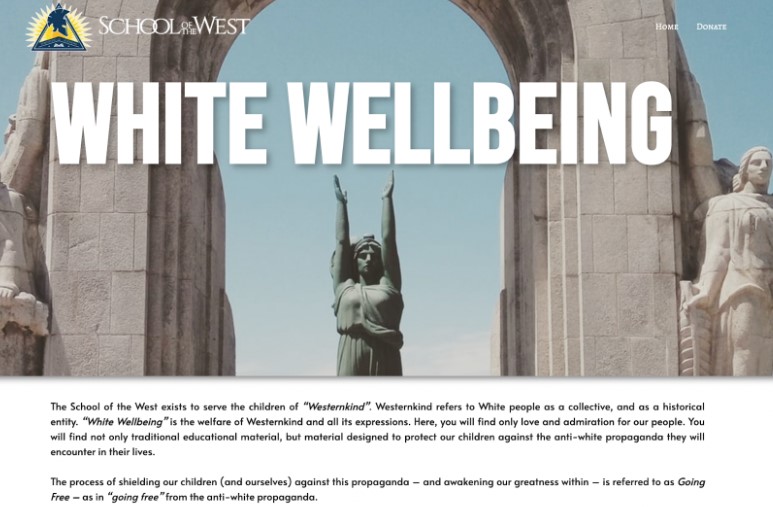
Fig. 1: The front page of Jason Kohne’s neo-Nazi website School of the West
Granola Nazis and the Folkish Movement
At the heart of the Granola Nazis are a racist neo-pagan group known as the Folkish Movement. A small group, the Folkish Movement have a significant large influence on white supremacist mythology and conspiracy discourses. Their styles, myths and language now circulate online in a wider white supremacist ‘digital traditionalism’ – the broader adaptation of a ‘granola’ or ‘crunchy’ style associated with hippies, nature, or organic farming to convey a white supremacist, anti-modern politics as online counterculture. These groups, especially after COVID-19, are building connections to broader far-right environmentalist, health and wellness movements, thus increasing their online presence. This section provides an introduction to the different groups within the Folkish Movement operating online today, the Granola Nazis whose styles and ideals support the broader movement of digital traditionalism.
‘Folkish’ refers to white supremacist pagans as opposed to other members of the cultic milieu like neo-druids, Wiccans, or ‘universalist’ pagans. The Folkish or neo-volkish Movement is where northern European naturalist religions merge to become the spiritual basis for white male supremacism. Folkish, also called Odinist, Asatru, Wotanist, heathen or pagan, creates a white religion from Nordic or Germanic tribal culture and blends these with German volkish racial ideology, Norse mythology and Nazi mysticism to create a pan-Aryan religion.
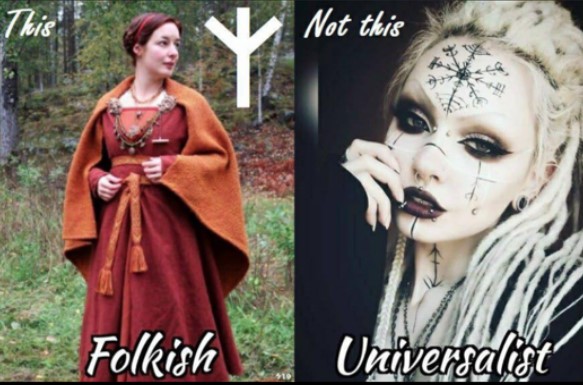
Fig. 2: A meme from a far-right pagan account contrasting white-supremacist paganism from other varieties in the form of desirable female personae. Note the presence of the Algiz ‘life’ rune which signifies white supremacy, as well as the modest and folkloric dress.
Granola Nazis can be identified by the aesthetics of their social media pages, featuring runes (especially the Algiz or the Nazi life rune pictured in Fig. 2); gothic fonts; references to Germanic myths; images of evergreen trees and suns, and gothic, melancholy women looking out at temperate landscapes. In their social media posts, calls for white supremacy are coded in a style somewhere between goth and hippie, borrowing from popular cultural representations of the European tradition: pre-Raphaelite images of Lords and Ladies; Netflix shows about Viking warriors; Lord of the Rings references; or blond farmers and maidens straight out of the works of Nazi film director Leni Riefenstahl.
Asatru Folk Assembly
The original American Folkish Movement is acknowledged to be the Asatru Free Assembly (AFA). The AFA was founded in California in 1969 and split into two groups in 1986 – the ‘universalist’ Thoth and the ‘folkish’ Asatru. In 1996, it was refounded as the Asatru Folk Assembly and openly embraced the folkish white supremacist branch. In the rest of this essay, I use ‘folkish’ to refer to this white supremacist natural religion.
Asatru is a small group – their largest gathering had only 153 people – dedicated to old Germanic mythology and religious practices and is said to mean ‘belief in the gods’ in the old Norse language. In Iceland, the AFA is a recognised pagan ( i.e. polytheistic or nature-worshipping) religion. In the United States, Asatru has long been linked to white supremacism and other neo-Nazi, neo-pagan beliefs like Odinism and Wotanism. These see Christianity as fundamentally Jewish, due first to its Abrahamic origins, but also to a conviction that it is replacing or ‘mongrelising’ what they see as Aryan belief. While their rhetoric emphasises ‘roots’, Asatru fundamentally worships whiteness. As founder Stephen McNallen believed only white people could be folkish, folkishness was seen as the religious expression of a white essence – an intense bodily and spiritual racial identity. Still today, only white people are permitted to participate or join their four churches, or Viking ‘hof’ as they describe them.
Wotansvolk
This Nordic stylisation of white supremacy became explicit, and more violent, in the group which followed Asatru – Wotansvolk. Wotansvolk was founded in 1995 by renowned neo-Nazi, David Lane, and his wife Katja, after Lane was imprisoned for murder as part of the white supremacist group The Order. Like Asatru, Wotanism is a neo-pagan ideology embracing a natural, racial spirit, emphasising more strongly its pan-Aryan, German, and Nazi roots. Indeed, WOTAN is an acronym for ‘Will of the Aryan Nation’. Wotanism is fringe and esoteric, yet prefigures the modern far-right’s digital metapolitics and its core ideals. Wotansvolk’s propaganda company ‘14 Words Press’ pushed white supremacist philosophy and ideology and sold ‘white volk’ branded merchandise, often to imprisoned white supremacists and their wives at home.
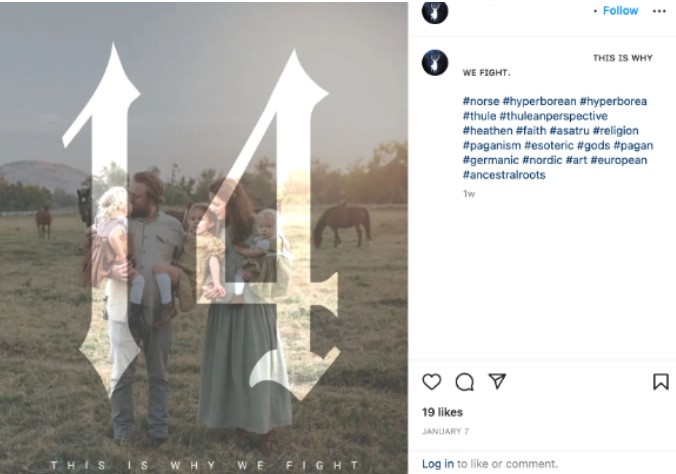
Fig. 3: A bucolic image of a white family overlaid with ‘14’ and the slogan ‘This is why we fight’
This inspired a broader movement among women to use tropes of pagan religion, nature, and family to normalise, circulate and advertise white supremacy. This movement includes the Women for Aryan Unity (WAU), one of the earliest adopters of this gendered style of framing white nationalism as a defence of the natural home.
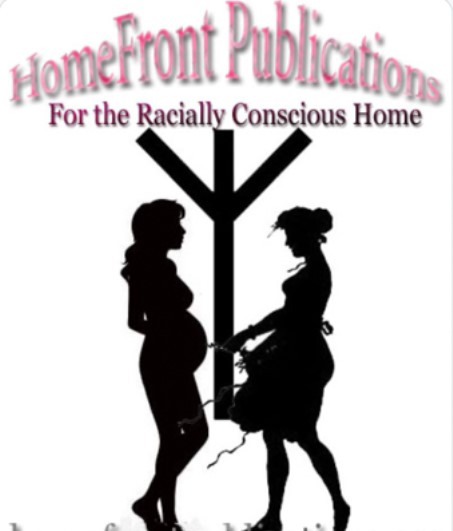
Fig. 4: A cover image from Women For Aryan Unity, a publication for women married to white supremacists.
Their message is disseminated in ‘feminine’ media such as magazines, homemaking advice, homeschooling materials, and children’s colouring books. These link the Folkish Movement to a broader movement towards traditionalism, including recent online manifestations of far-right femininity such as far-right ‘Tradwife’ female influencers. Folkish groups like Wotansvolk and WAU prefigure the growing importance of these cissexist narratives for normalising and spreading racist content and evading censorship, as Rae Jereza points out in another GNET Insight. In the next section, I look at a contemporary example of this – the folkish influencers ‘Hearth and Helm’.
Hearth and Helm
Hearth and Helm is a white supremacist hate group which runs a farm, and are active on Instagram, YouTube and Twitter as well as alt-platforms such as Gab. Hearth and Helm participate in alternative economies selling white nationalist branded products and trading in cryptocurrency. In their podcasts, they focus on natural health, childbirth, canning, pickles, herbalism, and raw milk and eggs – traditional practices with the aim of reviving what they term ‘folk vitality’. Their messaging suggests that recovering traditions and associated bodily practices will bring good health, vital manliness and fertile femininity. These become a means to – and a metaphor for – broader white racial vitality. With guests, they discuss homesteading and homeschooling, but also escaping the ‘tyrannical’ government and anti-vaccine politics. They defend a deeply gendered vision of radical sovereignty which opposes all forms of governance, including public schooling and healthcare, and align with violent anti-lockdown groups such as the Michigan Militia which aimed to kidnap Governor Gretchen Whitmer.
Hearth and Helm use the tools of right-wing female influencers like the ‘crunchy moms’ mentioned above to circulate this anti-modern narrative. They disseminate images of old-fashioned, traditional families sporting brightly coloured canned vegetables. They offer the same kind of food, health, wellness, and parenting advice as mainstream health influencers or ‘momfluencers’, but instead frame and politicise it as a fight for ‘folkish vitality’ between traditional family, faith and food, and modern corrupt, decadent, globalism.
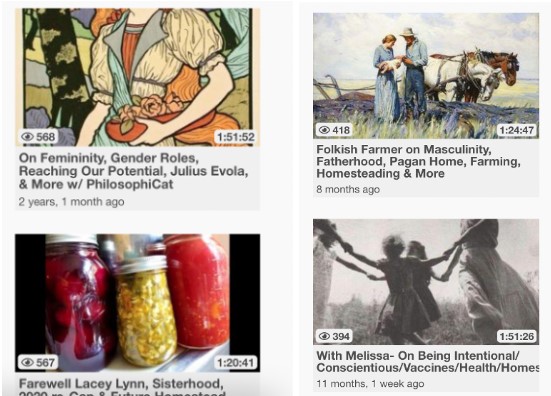
Fig. 5: Screenshots from the white supremacist YouTube channel run by Hearth and Helm. These show the visual styles and topics which the group uses in their mission of “reviving folk vitality”.
These women also do the work of building digital networks connecting the folkish community to the broader traditionalist sphere, and normalising white supremacist messaging as pro-‘white culture’. After the pandemic, their ‘granola’ style, which emphasises organic food, homestead-style living, and winsome white children, has become even more influential in the right-wing community. Far-right Tradwife influencers like Robin Riley or Blonde in the Belly of the Beast, as well as women from the British white nationalist group Patriotic Alternative, use this style to spread anti-vaccine, pro-white messaging.
Conclusion
Granola Nazis, the Folkish Movement, and digital traditionalism more broadly should not be underestimated as a growing force in the broader far-right ecological sphere. Their imagery is not just a costume; it is a vision of nature as expressing a white essence which has long roots in the folkish movement’s mix of environmentalism, anti-rationalism, and ultra-nationalism. Combined, they translate eco-fascism not merely into exterminationist violence, but into seemingly innocuous movements for health, wellness, and family. These have profitably translated into popular issues around the pandemic, anti-masking, vaccine, and government, using the language of health and environment to oppose everything from banning gas stoves to equal access to healthcare and ecology on a warming planet.
Tech companies should be aware of the growing presence of Granola Nazis and the broader digital traditionalist movement. The movement’s fascist roots mean that the content produced by its adherents comes with a set of esoteric social values and historical meanings. Tracing the roots of these styles, discourses and symbols can provide useful information for content moderators – identifying which runes, fonts, or symbols are typically used to encode offensive content. More broadly, awareness of how this has happened in the past should make us more aware of how images of nature and tradition spread neo-Nazi ideology in online spaces in the present.
